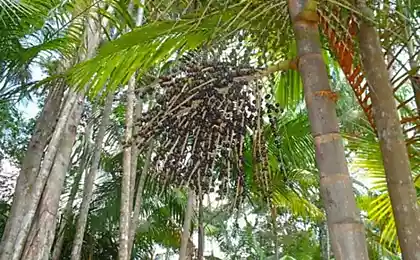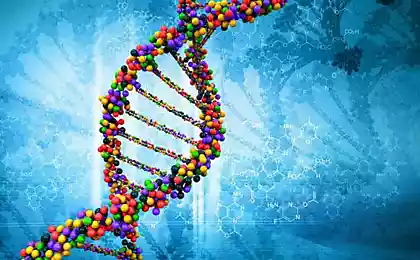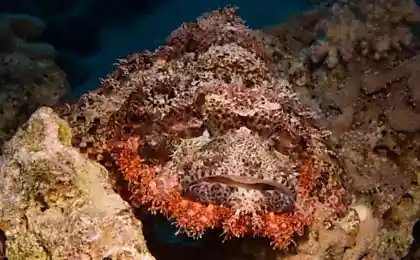220
The most poisonous minerals
Gutchinsonite.
The lead double is considered thallium. This metal in atomic density is slightly different from lead, very dense, fatty. However, despite the similarities, it is even more deadly. Thallium is a rare metal that occurs in toxic compounds that consist of strange combinations of elements. The effect of thallium on the body is very dangerous. They include dangerous skin diseases, hair loss, as well as many deaths. A mixture of arsenic, thallium and lead is called gutchinsonite. These poisonous metals are dangerous in themselves, but with such a mixture, they are a much more dangerous cocktail. This mineral received its name from the mineralologist John Hutchinson, an employee of the University of Cambridge. Such a dangerous mineral as gutchinsonite is found in Europe, in mountainous areas. As a rule, it can be found in ore deposits.
Arsenopyrite.
The second name of the metal is “fool’s gold”. It is easy to assume that there is a difference. If a person confuses arsenopyrite with gold, he will not be just a fool. It is a mistake not only to take this metal in your hands, but also to use these hands to cook food. This mineral is arsenic and iron sulfide. It belongs to one type of mineral with pyrite (iron sulfide, or “fool’s gold”). They differ in the heavy addition of arsenic. If you try to somehow change the metal, it emits a strong smell of arsenic. It is exuded from carcinogenic, deadly toxic, corrosive fumes that the mineral releases. During the processing of this metal, a person has to deal with sulfur salts of arsenic. To determine that in front of you is the “gold of fools”, you can just hit it with a hammer. At the moment when sparks fly away from the metal, you will feel a sharp and strong smell of sulfur.
Auripigment.
This stone is much more dangerous than arsenic, as it consists not only of arsenic and sulfur. Auripigment crystals grow as mineral formations underground. These crystals are chemically active and lethal. As a rule, they are formed in places not far from hydromineral sources. Outwardly, the auripigment looks beautiful and attractive. However, when in contact with this metal, it releases neurotoxic and carcinogenic arsenic powder. Previously, this mineral was pushed and lowered arrows in order to poison enemies. Since auripigment contains arsenic, it exudes a very strong smell of garlic. It is also possible that this mineral crumbles under the influence of light into a dangerous powder. In ancient times, this mineral was used to make ochre paint. This caused death among artists who used such paint for their work.
Thorburnite.
This mineral consists of nothing but poison. Beautiful green crystals, which are shaped like a prism, are made of uranium. Many people, collectors, admired the view of this mineral and filled their collections with them, placing them on shelves. Clusters of beautiful crystals are formed during the reaction between uranium, phosphorus, water and copper. The stones release a deadly gas called radon, which causes lung cancer. This crystal refers to those minerals that should not be paid close attention to. Torbernite is used by prospectors to create an indicator of uranium deposits.
Asbestos.
There are many terrible minerals on our planet, however, asbestos is one of the most dangerous. Other toxic minerals are harmful because of their chemical composition. But asbestos conducts mechanical sabotage in the human lungs. It consists of silicon dioxide, oxygen, iron and sodium. Clusters of thousands of filamentous crystals make up deposits of asbestos. The dangerous thing is that they are transported by air. If you are constantly near this mineral, then particles of crystals fall into the lungs, and form scars on them. In the atmosphere of our planet, natural weathering of natural asbestos spreads. For this reason, many people have small amounts of fibres of this dangerous mineral in their lungs.
Chalcantitis.
This metal looks very beautiful and has blue crystals. They consist of copper, which is combined with water and other elements, as well as sulfur. Copper becomes easily soluble in water. Because of this, it is easily absorbed by both animals and plants. Organisms become weak and then simply die as very moist internal organs simply cannot do their job. All scientists know that chalcantitis in any case can not be tried for salt content. In this case, an overdose of copper will occur in your body. These crystals easily create environmental problems. Since this metal is quite rare and very beautiful, the geological community has created an enterprise that grows artificial crystals for sale. They are advertised as genuine examples.
Galenite.
Galenite is used for the extraction of lead as the main ore. The appearance of the metal has a rather attractive: silver, shiny cubes, having a perfect shape. Lead is a very flexible metal, and due to the high sulfur content in galena, this mineral becomes even more flexible and fragile. Due to this, galena is easily chemically processed. Do not forget that when working with gallenite, you should observe all the necessary safety measures, since if you neglect the rules, you can inhale deadly dust. If, for example, metal is struck with a hammer, it will instantly split into many pieces of its original shape.
Stibnet.
Despite the fact that this mineral looks like silver, it is antimony sulfide. In ancient times, stibnite was used to cast dishes, as it had large, metallic crystals. Because of the beautiful utensils made by their sword-shaped crystals, mortality among those who used them increased. The fact is that the mineral can cause food poisoning. If you have been in contact with Stibnite, wash your hands immediately afterward.
Kinovary.
Of all the minerals on earth, this is the most toxic to treat. The name “cinema” translates as “dragon’s blood”. Mercury is extracted from this crystal. As a rule, they are formed near volcanoes and their presence is a signal of danger. With chemical treatment or simple heating, pure mercury is released. When it enters the human body, not only convulsions begin, but also sensitivity is lost. The result is death. In the late 1700s, people who were sent to work in Spanish mines were considered condemned to death because the mines contained cinnabar formations. Chinese history tells that in ancient times cinnabar was used not only for the manufacture of works of various forms, but also in medicine. Ancient doctors were confident in the healing properties of this metal and treated various diseases with cinnabar.
Colorado.
This crystalline mineral was recently discovered. It's in the veins of magma. Coloradoite carries a huge threat to the life of those who take it into their hands, since its composition is a compound of mercury telluride, which is formed as a result of alloying tellurium and mercury. Such a compound carries the threat of serious poisoning. Attempts at chemical changes emit dust and deadly steam.
Source: mif-facts.com.ua
The lead double is considered thallium. This metal in atomic density is slightly different from lead, very dense, fatty. However, despite the similarities, it is even more deadly. Thallium is a rare metal that occurs in toxic compounds that consist of strange combinations of elements. The effect of thallium on the body is very dangerous. They include dangerous skin diseases, hair loss, as well as many deaths. A mixture of arsenic, thallium and lead is called gutchinsonite. These poisonous metals are dangerous in themselves, but with such a mixture, they are a much more dangerous cocktail. This mineral received its name from the mineralologist John Hutchinson, an employee of the University of Cambridge. Such a dangerous mineral as gutchinsonite is found in Europe, in mountainous areas. As a rule, it can be found in ore deposits.
Arsenopyrite.
The second name of the metal is “fool’s gold”. It is easy to assume that there is a difference. If a person confuses arsenopyrite with gold, he will not be just a fool. It is a mistake not only to take this metal in your hands, but also to use these hands to cook food. This mineral is arsenic and iron sulfide. It belongs to one type of mineral with pyrite (iron sulfide, or “fool’s gold”). They differ in the heavy addition of arsenic. If you try to somehow change the metal, it emits a strong smell of arsenic. It is exuded from carcinogenic, deadly toxic, corrosive fumes that the mineral releases. During the processing of this metal, a person has to deal with sulfur salts of arsenic. To determine that in front of you is the “gold of fools”, you can just hit it with a hammer. At the moment when sparks fly away from the metal, you will feel a sharp and strong smell of sulfur.
Auripigment.
This stone is much more dangerous than arsenic, as it consists not only of arsenic and sulfur. Auripigment crystals grow as mineral formations underground. These crystals are chemically active and lethal. As a rule, they are formed in places not far from hydromineral sources. Outwardly, the auripigment looks beautiful and attractive. However, when in contact with this metal, it releases neurotoxic and carcinogenic arsenic powder. Previously, this mineral was pushed and lowered arrows in order to poison enemies. Since auripigment contains arsenic, it exudes a very strong smell of garlic. It is also possible that this mineral crumbles under the influence of light into a dangerous powder. In ancient times, this mineral was used to make ochre paint. This caused death among artists who used such paint for their work.
Thorburnite.
This mineral consists of nothing but poison. Beautiful green crystals, which are shaped like a prism, are made of uranium. Many people, collectors, admired the view of this mineral and filled their collections with them, placing them on shelves. Clusters of beautiful crystals are formed during the reaction between uranium, phosphorus, water and copper. The stones release a deadly gas called radon, which causes lung cancer. This crystal refers to those minerals that should not be paid close attention to. Torbernite is used by prospectors to create an indicator of uranium deposits.
Asbestos.
There are many terrible minerals on our planet, however, asbestos is one of the most dangerous. Other toxic minerals are harmful because of their chemical composition. But asbestos conducts mechanical sabotage in the human lungs. It consists of silicon dioxide, oxygen, iron and sodium. Clusters of thousands of filamentous crystals make up deposits of asbestos. The dangerous thing is that they are transported by air. If you are constantly near this mineral, then particles of crystals fall into the lungs, and form scars on them. In the atmosphere of our planet, natural weathering of natural asbestos spreads. For this reason, many people have small amounts of fibres of this dangerous mineral in their lungs.
Chalcantitis.
This metal looks very beautiful and has blue crystals. They consist of copper, which is combined with water and other elements, as well as sulfur. Copper becomes easily soluble in water. Because of this, it is easily absorbed by both animals and plants. Organisms become weak and then simply die as very moist internal organs simply cannot do their job. All scientists know that chalcantitis in any case can not be tried for salt content. In this case, an overdose of copper will occur in your body. These crystals easily create environmental problems. Since this metal is quite rare and very beautiful, the geological community has created an enterprise that grows artificial crystals for sale. They are advertised as genuine examples.
Galenite.
Galenite is used for the extraction of lead as the main ore. The appearance of the metal has a rather attractive: silver, shiny cubes, having a perfect shape. Lead is a very flexible metal, and due to the high sulfur content in galena, this mineral becomes even more flexible and fragile. Due to this, galena is easily chemically processed. Do not forget that when working with gallenite, you should observe all the necessary safety measures, since if you neglect the rules, you can inhale deadly dust. If, for example, metal is struck with a hammer, it will instantly split into many pieces of its original shape.
Stibnet.
Despite the fact that this mineral looks like silver, it is antimony sulfide. In ancient times, stibnite was used to cast dishes, as it had large, metallic crystals. Because of the beautiful utensils made by their sword-shaped crystals, mortality among those who used them increased. The fact is that the mineral can cause food poisoning. If you have been in contact with Stibnite, wash your hands immediately afterward.
Kinovary.
Of all the minerals on earth, this is the most toxic to treat. The name “cinema” translates as “dragon’s blood”. Mercury is extracted from this crystal. As a rule, they are formed near volcanoes and their presence is a signal of danger. With chemical treatment or simple heating, pure mercury is released. When it enters the human body, not only convulsions begin, but also sensitivity is lost. The result is death. In the late 1700s, people who were sent to work in Spanish mines were considered condemned to death because the mines contained cinnabar formations. Chinese history tells that in ancient times cinnabar was used not only for the manufacture of works of various forms, but also in medicine. Ancient doctors were confident in the healing properties of this metal and treated various diseases with cinnabar.
Colorado.
This crystalline mineral was recently discovered. It's in the veins of magma. Coloradoite carries a huge threat to the life of those who take it into their hands, since its composition is a compound of mercury telluride, which is formed as a result of alloying tellurium and mercury. Such a compound carries the threat of serious poisoning. Attempts at chemical changes emit dust and deadly steam.
Source: mif-facts.com.ua
Effective alignment of hair with home remedies
The business of garbage: as the unemployed became an entrepreneur























